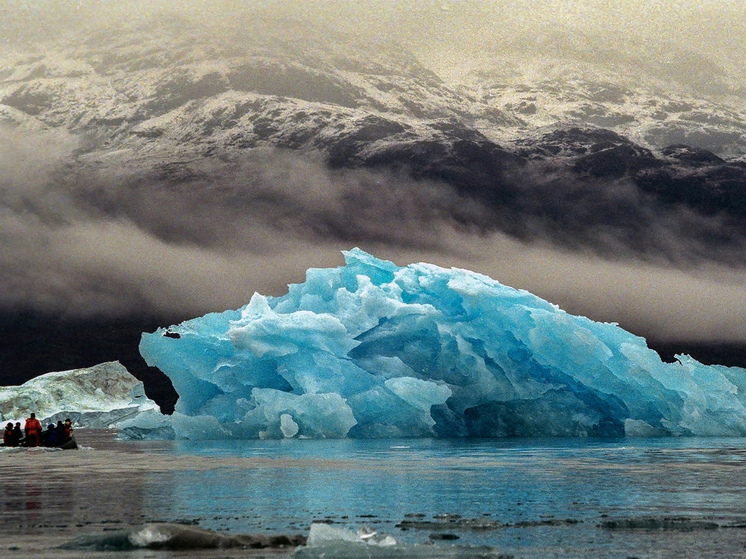Scientists — oddly enough — were delighted with the discovery
Giant viruses have been discovered on the Greenland ice sheet, but scientists say they could be useful. They believe they can help prevent melting ice caused by algae blooms.

The idea of a giant virus hiding on a huge sheet of ice might seem like the plot of a fresh sci-fi blockbuster, writes the Daily Mail.
But it became a reality after researchers discovered giant viruses in time of exploration of the Greenland ice sheet.
Before you panic that viruses could trigger the next pandemic, there is good news, notes the Daily Mail.
Scientists at Aarhus University hope that these viruses may actually be beneficial. «We don't know much about viruses, but I think they could be useful in preventing melting ice caused by algae blooms,» said Laura Perini, who led the study.
On the Greenland ice sheet, the algae remain dormant until spring, when they begin to bloom and cover large areas of ice. When ice turns black, its ability to reflect the sun's rays is reduced, and this speeds up the melting of the ice, thereby exacerbating global warming. But researchers believe newly discovered giant viruses could promote the growth of snow algae and perhaps prevent some of the ice from melting in the long term.
“We don’t yet know how specific the viruses are and how effective they will be,” admits Laura Perini. “But by studying them further, we hope to answer some of these questions.”
Giant viruses were first discovered in 1981, when researchers discovered them in the ocean. These viruses specialized in infecting green algae in the sea. Later, giant viruses were discovered in soil on land and even in humans.
However, according to Perini, the new discovery marks the first detection of giant viruses living on the surface of ice and snow, which are dominated by microalgae.
“We analyzed samples from dark ice, red snow and melting pits (cryoconite),” she said. “We found evidence of active giant viruses in both dark ice and red snow. And this is the first time they have been found on the surface ice and snow containing large amounts of pigmented microalgae. A few years ago, everyone considered this part of the world to be barren and devoid of life. But today we know that several microorganisms live there, including giant viruses, surrounded by a whole ecosystem. In addition to bacteria, filamentous fungi. and yeasts, there are protozoans that eat algae, various types of fungi that parasitize them, and the giant viruses that infect them, which we have discovered. To understand the biological controls that act on algal blooms, we need to study these last three groups.»
Because giant viruses are a relatively new discovery, not much is known about them, notes the Daily Mail.
Unlike most other viruses, they have many active genes that allow them to repair, replicate, transcribe and broadcast DNA. But why this happens and what exactly they use it for is unknown.
«We cannot determine exactly which hosts the giant viruses infect. Some may infect protozoa, while others attack snow algae «We just can't be sure yet,» said Laura Perini.
Scientists are working hard to learn more about the giant viruses and will conduct more research in the near future. “We continue to study giant viruses to learn more about their interactions and exactly what their role is in the ecosystem,” Perini added. “We will publish another scientific study later this year containing more information about giant viruses infecting cultivated microalgae. , growing on the ice surface of the Greenland Ice Sheet.»


